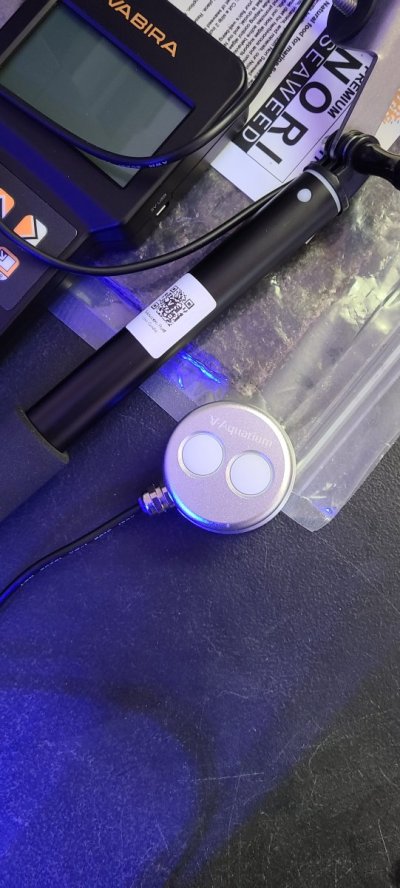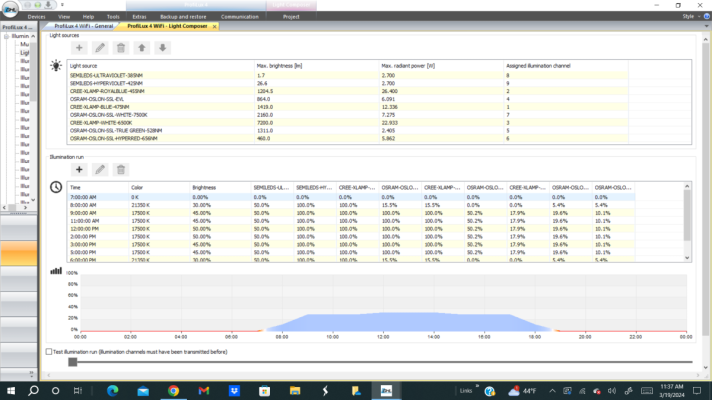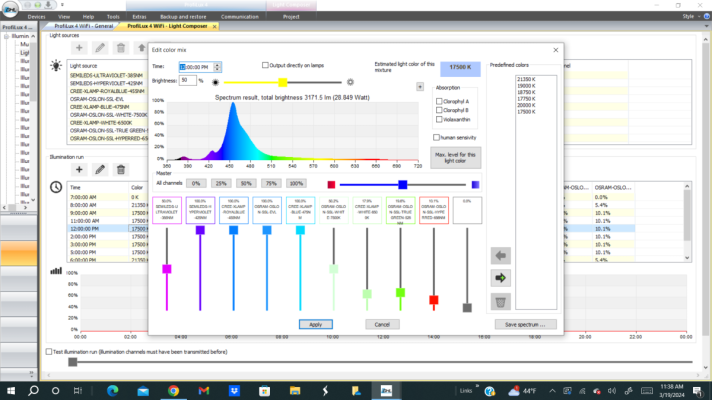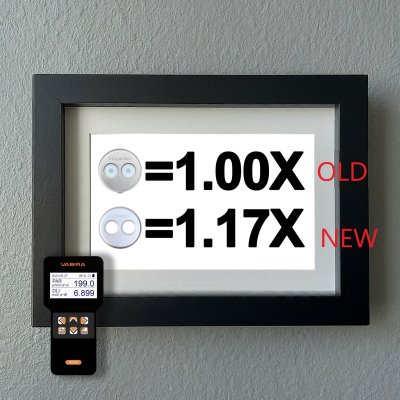@telegraham
I just wanted to thank you for the review and testing you did on the VBR-Aqua. I just purchased one based on your test. Mine arrived last night and I just did a one location test this morning and I was in total shock of what I observed. For the past few years it looks like I have been starving my corals of light which explains a lot on why a lot of my LPS corals look like crap ( polyp extension, color etc ). A while ago I got rid of the 5 or so SPS I had and went strictly LPS and Softies due to I was not seeing good color, growth or polyp extension on the SPS. The wife thought they were ugly lol. In the past I was using the Seneye Reef ( which I just threw in the trash ). I also rented the Apogee 500 series from BRS a while ago and it was broke so I never was able to do a verification of the Seneye Reef's accuracy ( my fault ). The area I just measured, ( 9" ) down from the water surface which is the tallest point on my rockscape only read 82 par on the VBR and read 252 par on the Seneye Reef. You talking more than 3X difference.
For what it's worth, I have 4 Mitras 7602's on my 84x30x24 tank. I will be changing my light settings and going into acclimation mode for a few months after I figure out what the PAR values throughout the tank I need for the corals I have and the ones I plan on getting. I made a list of optimal PAR values for different species of corals last night after doing some research. I have some work to do.
I just wanted to thank you for the review and testing you did on the VBR-Aqua. I just purchased one based on your test. Mine arrived last night and I just did a one location test this morning and I was in total shock of what I observed. For the past few years it looks like I have been starving my corals of light which explains a lot on why a lot of my LPS corals look like crap ( polyp extension, color etc ). A while ago I got rid of the 5 or so SPS I had and went strictly LPS and Softies due to I was not seeing good color, growth or polyp extension on the SPS. The wife thought they were ugly lol. In the past I was using the Seneye Reef ( which I just threw in the trash ). I also rented the Apogee 500 series from BRS a while ago and it was broke so I never was able to do a verification of the Seneye Reef's accuracy ( my fault ). The area I just measured, ( 9" ) down from the water surface which is the tallest point on my rockscape only read 82 par on the VBR and read 252 par on the Seneye Reef. You talking more than 3X difference.
For what it's worth, I have 4 Mitras 7602's on my 84x30x24 tank. I will be changing my light settings and going into acclimation mode for a few months after I figure out what the PAR values throughout the tank I need for the corals I have and the ones I plan on getting. I made a list of optimal PAR values for different species of corals last night after doing some research. I have some work to do.



















